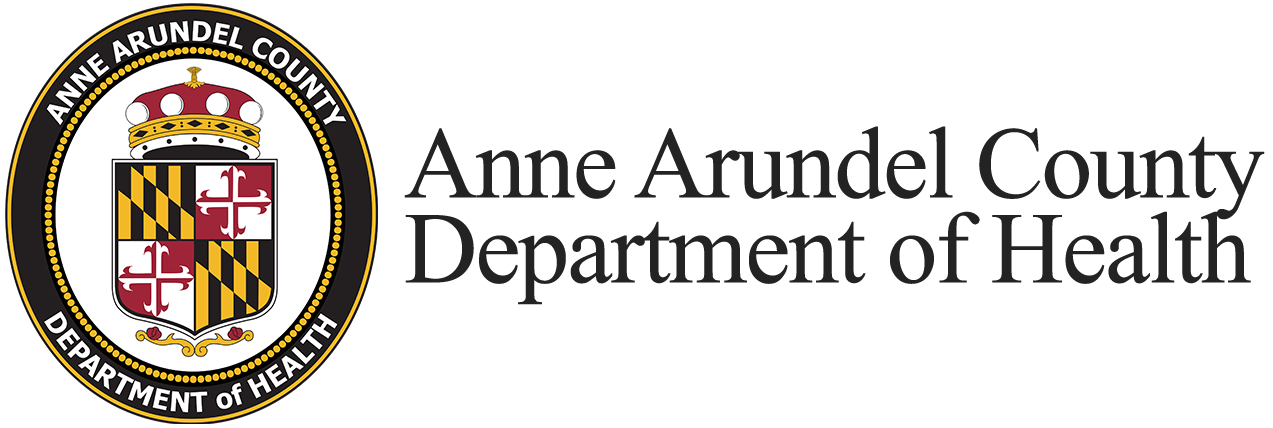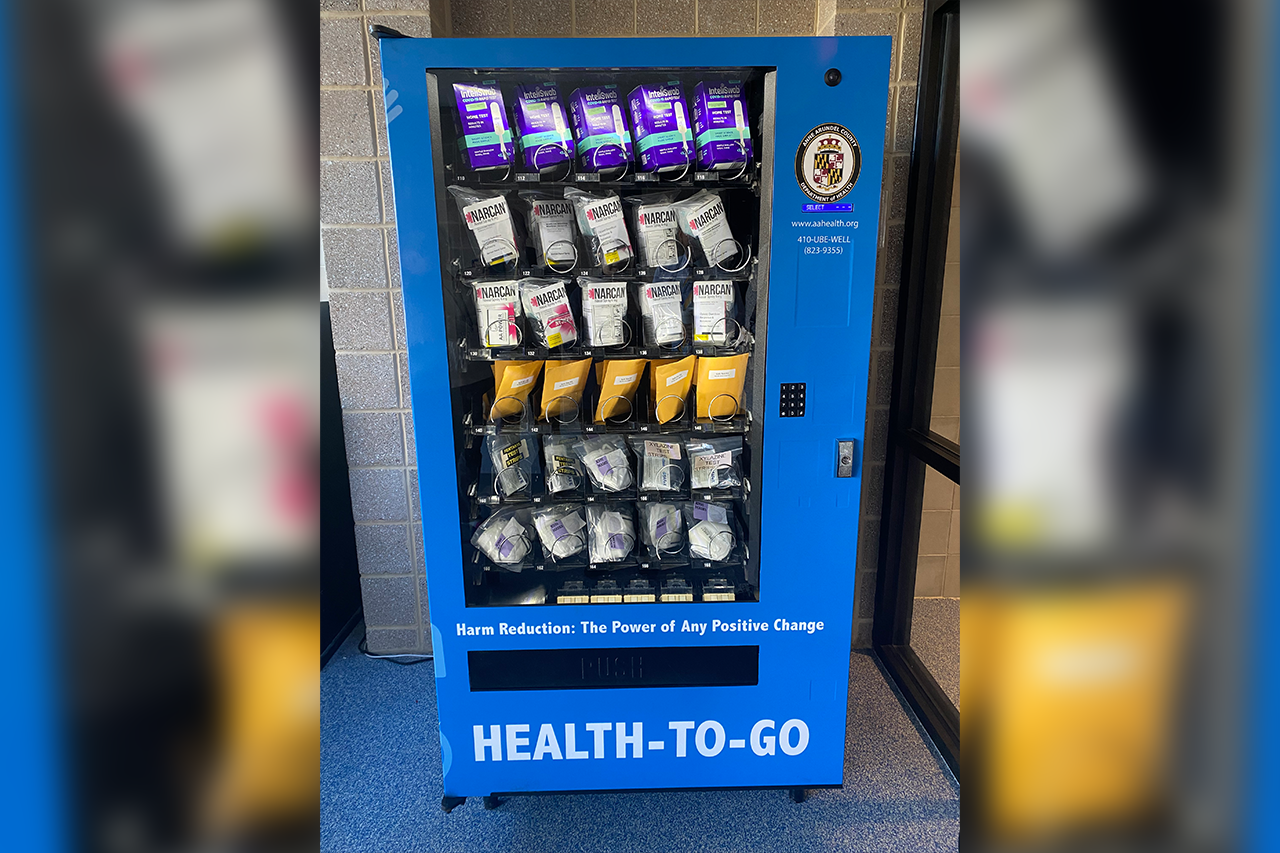The Anne Arundel County Department of Health installed vending machines stocked with the lifesaving drug naloxone in areas where there is a higher instance of opioid overdoses. Making naloxone available and free of charge helps prevent overdoses. Naloxone quickly blocks the effects of opioids on the brain, allowing a person suffering breathing problems due to an overdose to be revived. There is no harm in using it.
For anyone who is seeking recovery resources or more information on naloxone training, contact aapower@aacounty.org or 410-222-1842.
For anyone who is seeking treatment information, contact the Treatment Referral Line at 410-222-0117 or 410-UBE-WELL (823-9355), Monday through Friday, 8:00 a.m. to 5:00 p.m.
Current Machine Locations
| Eastport Community Center 1014 President St, Annapolis, MD 21403 Monday - Thursday 8:00 a.m. - 5:00 p.m. Weekend hours vary |
| Jennifer Road Detention Center 131 Jennifer Rd, Annapolis, MD 21401 Monday - Sunday 8:00 a.m. - 10:00 p.m. |
| Ordnance Road Correctional Center 600 E Ordnance Rd, Glen Burnie, MD 21060 Monday - Sunday 8:00 a.m. - 10:00 p.m. |
| Brooklyn Park Library 1 E 11th Ave, Baltimore, MD 21225 Monday - Thursday: 10:00 a.m. - 9:00 p.m. Friday - Saturday: 10:00 a.m. - 5 :00 p.m. |
| Deale Library 5940 Deale Churchton Rd, Deale, MD 20751 Monday - Thursday: 10:00 a.m. - 9:00 p.m. Friday - Saturday: 10:00 a.m. - 5:00 p.m. |
| Severn Center 1160 A Reece Rd, Severn, MD 21144 Monday - Sunday 8:00 a.m. - 8:00 p.m. |
| Health Services Building 3 Harry S. Truman Parkway, Annapolis, MD 21401* Monday - Friday: 8:30 a.m. - 4:30 p.m. *This is a temporary location while our Glen Burnie Health Center is under construction |
The locations were chosen in areas where there is a higher instance of opioid overdoses. The county’s two detention centers were also selected because studies consistently show that opioid overdose risk is 10 to 40 times greater for individuals recently released from incarceration with the highest risk within two weeks post-release.
While the primary purpose of these vending machines is to dispense naloxone, they also offer other items, such as COVID-19 at-home tests and masks.
Vending Machine FAQ
Does it cost money to get an item out of the vending machine?
No, items in the vending machine are free.
How do I access items in the vending machine?
Choose the item you want and enter the selection code into the keypad. Your items should be dispensed.
What should I do if the vending machine is out of stock or has issues?
Fill the Report Low Stock or Issues Form or email aapower@aacounty.org with the location of the machine.
How can I share my thoughts and comments about the vending machine with the Anne Arundel County Department of Health?
To provide feedback about the vending machines, complete the Feedback Survey. We appreciate your feedback!
Naloxone FAQ
What is naloxone? Is it different from Narcan®?
Naloxone is a safe lifesaving medication that can reverse an opioid overdose. Narcan® and naloxone are the same thing. Narcan® is just the brand name of the medication.
There is no harm in administering naloxone. Naloxone can be given safely to people of all ages, from infants to older adults.
Do I need a prescription to get naloxone?
As of July 1, 2023, naloxone is available over-the-counter and does not require a prescription. However, a prescription may lower the cost of naloxone depending on your insurance.
How can I get trained to use naloxone?
Naloxone comes with instructions, but if you would like to attend a free, virtual training through the Department of Health, register at AAHealth.org/opioid-overdose-response-training or contact aapower@aacounty.org.
Fentanyl FAQ
What is fentanyl?
Fentanyl is a powerful synthetic opioid that is 50 to 100 times stronger than morphine. There is a greater risk for overdose because of fentanyl's high potency.
Non-prescribed fentanyl is being sold in counterfeit pressed pills, marketed as NorcoⓇ, PercocetⓇ, XanaxⓇ and OxycontinⓇ.
Fentanyl is also being sold as heroin in powder form. It has been found in methamphetamines, cocaine and even illicit cannabis.
What are fentanyl test strips?
Fentanyl test strips are small strips of paper that can detect the presence of fentanyl in all different kinds of drugs and drug forms.
Test strips can tell if drugs contain fentanyl, but not how much or how strong. Test strips can prevent an overdose if used correctly and with other risk-reduction practices.
Below are general steps for using fentanyl test strips. Directions may vary. Always be sure to read the instructions thoroughly.
Step 1
Put a small amount (10mg) of the drug aside in a clean, dry container.
Step 2
Add water to the container and mix. Usually 1/2 teaspoon of water, but consult instructions.
Step 3
Place the wavy end of the test strip in the water and let it absorb for about 15 seconds.
Step 4
Take the strip out of the water and place it on a flat surface for 2 to 5 minutes.
Xylazine FAQ
What is xylazine?
Xylazine is a drug intended for use in animals as a sedative and pain reliever. It is not safe for humans and may result in life-threatening reactions, like slowing or stopping breathing, and serious skin infections.
Xylazine is showing up in the nation’s street drug supply, where it is also known as “tranq” and “tranq dope.” It may be included in illicit drugs and counterfeit pills—often without the knowledge of people who use these drugs. There is no test readily available to the public to test for xylazine in drugs (like there is for fentanyl).
Some people who use drugs might use xylazine intentionally to prolong the effects of certain drugs, especially when using fentanyl. This increases the risk of overdose and death. It can be swallowed, inhaled, smoked, snorted or injected into the muscle or vein.
It works as a sedative, causing low blood pressure, slow heart rate, reduced breathing and drowsiness. When injected, it can cause complex, painful and serious skin infections like skin ulcers and abscesses. Left untreated, these injuries may lead to additional complications, including amputation.
Xylazine is not an opioid, like fentanyl, but naloxone should be administered during a suspected or known overdose because of the high likelihood that opioids, including fentanyl, are also present. The effects of xylazine alone are not reversed by naloxone, and unfortunately, there is no reversal drug for it.
What are xylazine test strips?
Test strips can help identify if the drug is present in the sample but do not show the amount, purity or potency found in the sample. Lidocaine, an anesthetic sometimes found in drug samples, can produce a false positive. If you suspect that lidocaine is causing a false positive, you may dilute 5mg of the substance in more water (30ml). This may help rule out false positives due to lidocaine, but this is not guaranteed.
Below are general steps for using xylazine test strips. Directions may vary. Always be sure to read the instructions thoroughly.
Step 1
Put a small amount of the substance into a clean, dry container.
Step 2
Add water to the container and mix. Usually 1 teaspoon of water, but consult instructions.
Step 3
Dip the test strip in the water and let it absorb for about 15 seconds.
Step 4
Take the strip out of the water and place it on a flat surface. Read results in 5 minutes.
Test strips are not 100% accurate but do reduce risks.
No drug use is 100% safe.

